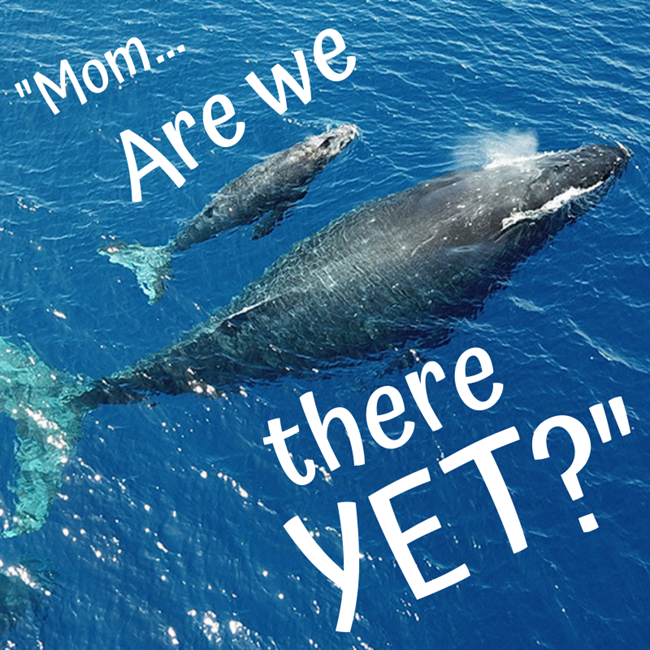Last updated: September 14, 2021
Article
The Transportation Times

NPS photo
Whether by land, by air, or by sea, visitors come from all over the world to experience national parks. It’s also spring time, so wildlife is on the move, too. This includes large marine mammals, such as humpback and gray whales, and while they may not be setting out to take in the sights or catch a ranger program, they do have a few favorite national park stops on their journey. If you happen to be at the same park at the same time, be sure to follow the transportation rules to keep your family safe as well as the wildlife.
Everyone is on the move!
The spring months mean peak migration time for many species including two special Pacific park visitors - humpback and gray whales headed out on massive "road trips" with their babies.These behemoths of the sea spend the winters in Mexico and Hawaii to have their calves,then migrate north to the plankton-rich waters of Alaska. On their return northward, during spring migration, they often travel close to shore. National park units like Cabrillo National Monument, Golden Gate National Recreation Area, Point Reyes National Seashore, Redwoods National Park, and Olympic National Park are some of the best spots to look for whales this season.

NOAA photo under MMHSRP permit
Are we there yet?
Many feeding humpback whales can be seen in Glacier Bay National Park in southeast Alaska, where researchers have been studying them since 1985. Both species of whale have also been seen in the waters surrounding Kenai Fjords National Park. Some gray whales will remain further south, feeding in the waters off Redwoods and Olympic National Parks, but most head north to the Bering and Chukchi seas off the coast of Alaska. Humpback whales travel over 6,000 miles in a year, but gray whales may travel more than 10,000!
Give them space to be wild.
If you’re out boating,kayaking, paddleboarding, or motor-boating in these waters, keep a careful eye out for migrating and foraging whales. A rare (lucky) few will catch the whales splashing around or even breaching out of the water! Most often they’re quiet and focused on the task at hand:keeping their calf safe during a long migration or finding enough food to sustain them through the following winter. You may only see a dark shape in the distance or a faint whale spout (blow) as they come up to breathe. Be whale-aware and remember to go slow in whale habitat! Here are a few tips you can use when enjoying the ocean in national parks:
-
Some parks, such as Glacier Bay, require boat permits in the summer, since it’s a heavily used whale feeding area, but all parks have guidelines about boating and marine mammals including keeping at least 100 yards of distance and avoid being directly in the whale's path. Remember, they’re trying to feed!
-
Summertime is growing time for baby whales whospend limited time with their mothers, so every minute is crucial for nursing, playing, and learning how to be wild marine mammals! A baby whale can drink over 200 gallons of milk a day,gaining more than 100 pounds per day! Disturbing them can interrupt valuable nursing time. This is true for most wildlife species who have their young in the summer months - be sure to give all wildlife space to be wild both within national parks and outside of them.

NPS/Sparhawk
If you’re kayaking or paddle-boarding and encounter whales, do not approach them. Raft up with others in your group and watch from a distance (100 yards!), waiting for them to pass. Approaching too close while whales are feeding can be dangerous for a small kayak - adult whales can be over 45 feet long! Intentional capsizing is rare but a food-focused whale may misjudge distance when approaching a school of fish (bait ball) and accidentally capsize a nearby kayaker.
During National Park Week, enjoy watching the whales migrate. They’re truly magnificent creatures and fun to watch. Just remember to give them plenty of room and follow the park’s boating rules.
